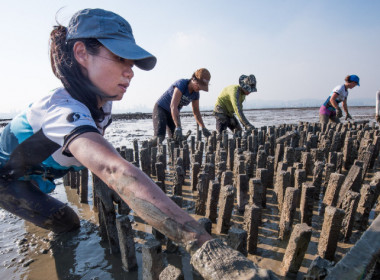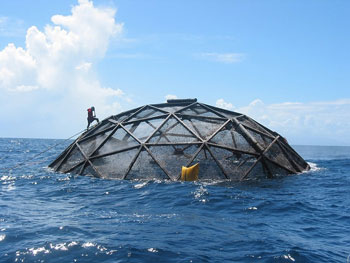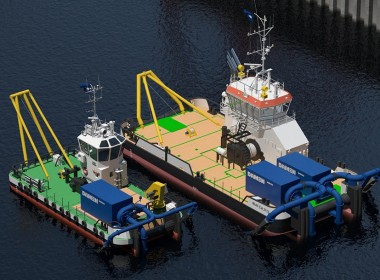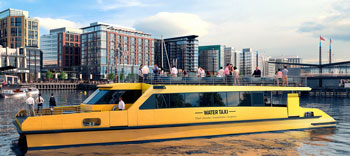Oyster reefs provide habitat and filter water, new NOAA studies show

NOAA Fisheries scientists and their partners at several other academic and research institutions explored how restored oyster reefs help the Chesapeake Bay.
They have released their findings in a new NOAA Fisheries technical memorandum that quantified how oyster reefs improve water quality and provide habitat, as well as support commercial fishing and local economies.
The report includes information from Oyster Reef Ecosystem Services projects in both Maryland and Virginia that were carried out or funded by the NOAA Chesapeake Bay Office. The projects focused on quantifying the benefits that restored oyster reefs bring to the ecosystem and people.
Chesapeake Bay is home to the largest oyster restoration effort in the world. The NOAA and its partners are working to restore healthy oyster populations and habitat in 10 tributaries by 2025.
In just one of these tributaries — Harris Creek on Maryland’s Eastern Shore — over 140 hectares have been restored.
Enhancing water quality
Because oysters are filter feeders, more restored reefs means more oysters, and that means more filter feeding, which can result in clearer water near those reefs.
Among the substances oysters filter from the water is nitrogen. This can help the ecosystem because excess nitrogen in the water can fuel potentially harmful algae blooms.
Successfully restored reefs are expected to remove about seven times as much nitrogen each day than unrestored sand/mud bottom areas can, the NOAA said.
In Harris Creek (Maryland) alone, restored reefs each year remove nitrogen equivalent to roughly 20,000 bags of 10-10-10 garden fertiliser.
Providing important habitat
Reefs have also proven to be ideal places for blue crabs and fish to hide from predators. During a study, juvenile crabs had three to four times better chance of surviving predators if they were on a reef than if they were on sandy bottom.
There are more invertebrates and small fish around restored oyster reefs than there are in places that don’t have oyster reefs. The number of small fish and invertebrates increases with the number of live oysters, which means healthy restored reefs are also a viable source of food for larger fish.
Blue crabs use reefs for foraging, and Chesapeake Bay watermen have long set crab traps and trotlines near them for harvest to take advantage of this. Research found that white perch, silver perch, and striped bass like to eat species that live on or near oyster reefs.
Providing habitat for macrofauna
Macrofauna are small — but still visible — animals eaten by larger fish and crabs. On restored Chesapeake Bay reefs that had a high density of oysters, there were, on average, more than 5,000 macrofauna in a square metre.
Underwater video indicates that oyster restoration has resulted in oyster reefs that are taller and more complex than harvested reefs, providing habitat for a greater diversity of species.
Enhancing commercial fishing and related economies
Oyster reef restoration also has the potential to generate large increases in commercial seafood harvest, especially that of blue crab.
Relative to pre-restoration conditions, fully mature, restored oyster reefs in Harris Creek, Tred Avon River, and Little Choptank River could increase commercial blue crab harvest by more than 150 per cent.
When mature, these restored reefs could boost annual dockside seafood sales by US$11 million annually in Dorchester and Talbot counties. These are the two Maryland counties bordering the waterways where oyster reef restoration occurred.
Through these initial sales and the subsequent respending of these dollars in the regional economy, total annual sales impacts could increase by US$23 million.








